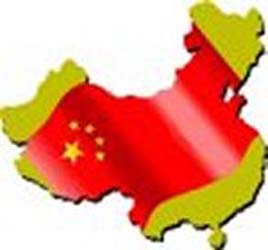China shows off nuclear missiles in "steel Great Wall"
 Beijing - China showed off much of its latest military hardware Thursday in a parade to mark the 60th anniversary of Communist Party rule, including long-range missiles designed to carry nuclear warheads.
Beijing - China showed off much of its latest military hardware Thursday in a parade to mark the 60th anniversary of Communist Party rule, including long-range missiles designed to carry nuclear warheads.
Among the hardware identified by China Central Television was a convoy of mobile launchers for the Dongfeng-31A, a nuclear-armed intercontinental ballistic missile reportedly capable of reaching a target up to 11,000 kilometres away.
The state broadcaster said the 8,000 troops who took part in the parade along with their hundreds of vehicles, planes and missiles were key elements in China's "steel Great Wall."
The military parade showcased 52 types of weapons systems, including battle tanks, anti-aircraft guns, drones, attack helicopters, third-generation J-10 fighter planes and early-warning aircraft.
As he reviewed the troops, President and party leader Hu Jintao greeted his "comrades" from the People's Liberation Army and the People's Armed Police, an army offshoot that guards China's borders and key infrastructure.
Hu, who also heads the party's Central Military Commission, said the two arms of the military "must carry forward their glorious tradition, build up military strength and perform their duties earnestly."
Senior Colonel Zhang Guangzhong, who led the 2nd Artillery's nuclear missile formation in the parade, said his troops had taken delivery in 2007 of new nuclear missiles with "quicker response, longer range and enhanced maneuverability."
Research and development of strategic nuclear missiles "represents the highest level of the country's homegrown weapons," the official Xinhua news agency quoted Zhang as saying.
"Many of our domestically made arms have been produced on the basis of technologies and experience of developed countries, but China has chosen a completely independent way in developing strategic nuclear weapons," Zhang said.
The agency quoted army headquarters as praising nuclear missiles as its "trump card" and noted that Hu had recently reiterated China's "no first strike" policy.
It said the missiles "shoulder a divine mission of curbing the threat of war and safeguarding state sovereignty."
Among more than a dozen other missile systems identified in the parade were Dongfeng 21C medium-range ballistic missiles, Dongfeng 15B and Dongfeng 11A short-range missiles, Hongqi coastal defence and ship-to-air missiles, and Hongqi 12 surface-to-air missiles.
Thursday's parade reflected a more streamlined army than 10 years ago during the previous large military parade with the largest ever display of hardware and a smaller number of troops but a higher proportion from the navy, air force and 2nd Artillery.
Xinhua quoted Defence Minister Liang Guanglie as saying last month that China was already close to matching Western nations in military technology.
"We have military-use satellites; advanced fighter aircraft in the air; newly designed tanks, cannons and missiles on land; and advanced naval vessels and submarines at sea," Liang said.
"Much of our weaponry has reached or come close to the world-leading standards," he was quoted as saying.
The army saw its first large military parade in a decade as a "sacred mission" so important that the participating soldiers spent five months training for the event.
With an arsenal of nuclear missiles and a navy with an increasingly visible presence in the disputed waters of South-East Asia, many Western analysts see China's heavy military investment as pursuing rapid parity with the United States, which Chinese military leaders still see as their main adversary.
"For the international society ... to see China becoming strong, they may feel a little nervous," Song Xiaojun, a Beijing-based commentator on military affairs, told the German Press Agency dpa before the parade.
But Song argued that by strengthening the army, China was only seeking a "normal balance" between its robust economic interests and a relatively weak military.
"For example, every year, [China] has some crude oil and iron ore transportation by sea, but actually, it cannot afford security protection for this, so the military power, which should support its security interests, is far from enough," Song said.
Key to supporting China's offshore interests are the navy and air force, which have undergone rapid expansion and modernization over the past 25 years.
"Over the past six decades, the navy has finished a weapons upgrade from semi-mechanized to mechanized," Wu Shengli, the commander of the navy, told Xinhua.
"Now we are incorporating computer and information technologies," Wu said.
Chinese ships have joined international rescue exercises and anti-piracy patrols in the Gulf of Aden while its soldiers have taken part in more UN peacekeeping missions.
The United States has resumed military dialogue with China and hopes that greater international military cooperation will be the way forward.
Admiral Timothy Keating, head of the US Pacific Command, said in mid-September that he was "cautiously optimistic" about military relations with China and that the Pentagon wanted to "draw the Chinese out."
"We're watching them," Keating said. "We're paying close attention. But I don't view China as a threat. We don't want them to view us as a threat." (dpa)